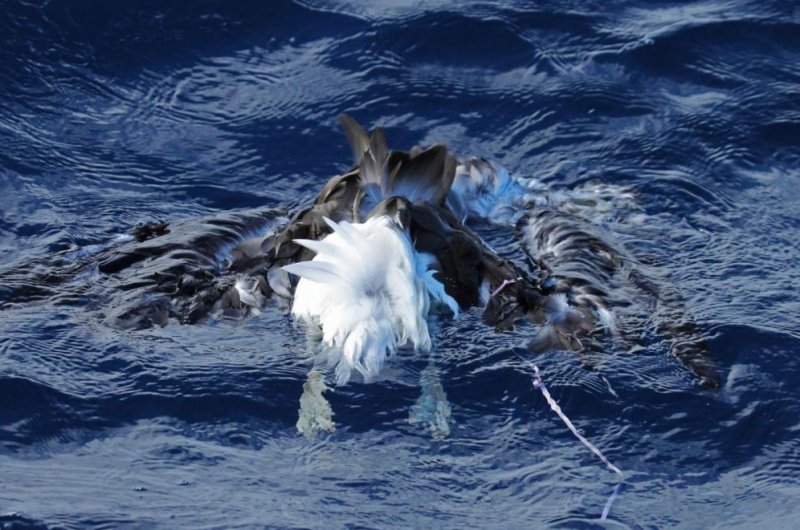Scientists found and studied dozens of dead seabirds, including this black browed albatross found with balloon string. Photo by Todd Burrows/UTAS
March 4 (UPI) -- As the prevalence of plastic pollution increases, marine species, including seabirds, are more likely to ingest bits of plastic. According to a new study, some types of plastic debris are deadlier than others.
For seabirds, the deadliest piece of trash is a balloon.
"Marine debris ingestion is now a globally recognized threat," Lauren Roman, a doctoral student at the University of Tasmania, said in a news release. "However, the relationship between the amount or type of debris that a seabird ingests and mortality remains poorly understood."
Roman and her fellow marine scientists dissected dozens of deceased marine seabirds, sorting and counting the bits of plastic found in each bird's intestines. Researchers discovered correlations between the amounts and type of plastic and the rate of mortality.
Most of the birds surveyed died as a result of an intestinal blockage. Infections or complications caused by a gastrointestinal obstruction was the second leading cause of death.
"Although soft plastics accounted for just 5 percent of the items ingested they were responsible for more than 40 per cent of the mortalities," Roman said. "Balloons or balloon fragments were the marine debris most likely to cause mortality, and they killed almost one in five of the seabirds that ingested them."
The new findings, published in the journal Scientific Reports, reflect the results of similar surveys of sea turtle deaths, which showed hard plastics pass more easily through the intestines, while soft plastic pieces are more likely to get stuck, compacted and cause problems.
Though balloons proved to be especially problematic, all types of plastic increased the risk seabird mortality.
"While hard plastics are less likely to kill than soft plastics they were still responsible for more than half of the seabird deaths identified in our study," Roman said. "The evidence is clear that if we want to stop seabirds from dying from plastic ingestion we need to reduce or remove marine debris from their environment, particularly balloons."















